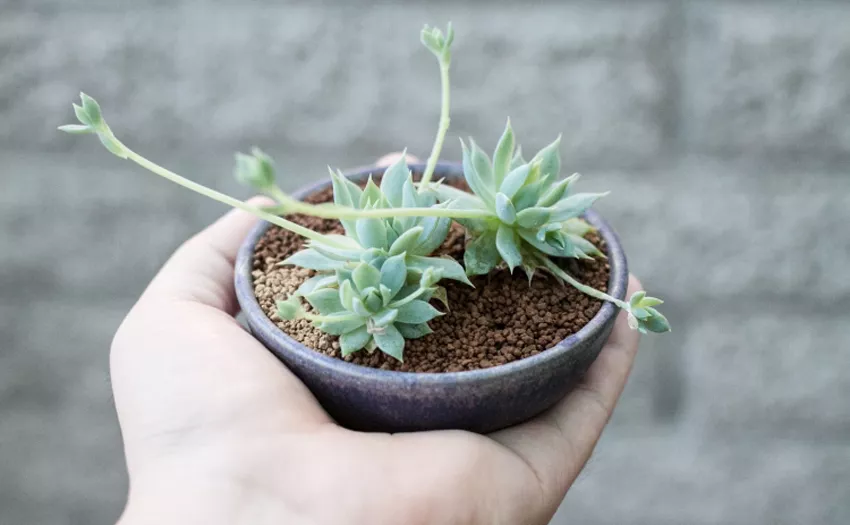Succulents, with their captivating beauty and unique charm, have become a favorite among plant enthusiasts. One of the most magical moments in a succulent’s life is when it graces us with its splendid blooms. However, once the flowering show is over, many succulent growers wonder what to do next.
Understanding Succulent Blooms
Before delving into post-blooming care, it’s essential to understand the nature of succulent blooms. Succulents are known for their unique and stunning flowers, which come in various shapes, sizes, and colors. The blooming process is an energy-intensive phase in a succulent’s life cycle, during which it invests significant resources into producing and maintaining flowers. Typically, succulents bloom in response to environmental cues like changes in light or temperature, making it a remarkable event for succulent enthusiasts.
Post-Blooming Phase
After the flowers have graced your succulent, the plant enters the post-blooming phase. This phase involves several critical aspects that can impact the overall health and future blooming of your succulent.
1. Deadheading and Pruning
Once the flowers on your succulent begin to wilt and die, it’s a good idea to remove them. This process is known as deadheading. To do this, use clean, sharp scissors or pruning shears to snip the spent flower stems carefully. Deadheading serves several purposes:
It promotes a tidy and well-groomed appearance for your succulent.
It prevents the plant from channeling energy into seed production.
It can stimulate the succulent to produce more flowers or offsets (baby plants).
When deadheading, be sure to trim the stem just above the point where it joins the main plant.
2. Observe for Seed Pods
In some cases, if your succulent was pollinated during the blooming process, it may produce seed pods. These pods contain the seeds of the succulent, which can be used for propagation. If you’re interested in collecting and growing succulents from seeds, allow these pods to mature on the plant. Once they are dry and ready to release their seeds, you can collect them and plant them according to the specific requirements of the succulent species.
3. Adjusting Care and Watering
During the blooming phase, succulents often require more water and nutrients to support their flowering. After the flowers fade, it’s essential to adjust your care routine. Succulents, by nature, prefer periods of dryness and are well adapted to drought conditions. Reduce the frequency of watering to allow the soil to dry out between watering sessions. This helps prevent root rot and maintains the succulent’s overall health.
4. Fertilization
After your succulent blooms, it can benefit from a gentle dose of fertilizer. Use a balanced, diluted, water-soluble fertilizer formulated for succulents. Apply it sparingly during the growing season, typically in spring and summer. Avoid fertilizing in the fall and winter when succulents enter their dormancy phase.
5. Repotting (If Necessary)
If your succulent has outgrown its current pot or the soil has become depleted of nutrients, consider repotting it. This is an ideal time to inspect the roots and address any root-bound issues. Choose a pot that is slightly larger than the current one, use well-draining soil, and ensure your succulent sits at the same depth as it did in its previous container.
6. Light and Temperature
Succulents require ample sunlight to thrive, but after blooming, they may benefit from a transition period with slightly less direct light. Gradually introduce your succulent to a shadier spot to help it acclimate. Also, be mindful of temperature changes, as succulents are sensitive to extreme heat or cold. Ensure they are shielded from harsh weather conditions.
Propagation
Succulent propagation is a rewarding practice and can be a natural next step after the blooming phase. While some succulents propagate through seeds, many are easily propagated through offsets, leaves, or stem cuttings. If your succulent produced offsets during the blooming phase, you can carefully separate and replant them in their containers. Alternatively, you can propagate your succulent from healthy leaves or stem cuttings, following the propagation techniques specific to the succulent variety.
Dormancy Period
Succulents, like many plants, go through a dormancy period, typically in the fall and winter. During this time, they slow down their growth and may appear less vibrant. It’s crucial to adapt your care routine to accommodate this natural cycle. Reduce watering, avoid fertilizing, and keep them in a cool, well-ventilated area. Succulents will bounce back to life as the growing season returns in spring.
Pest and Disease Control
After your succulent has finished blooming, it’s an excellent opportunity to inspect your plant for any signs of pests or diseases. Common pests include mealybugs, aphids, and scale insects. If you notice any of these unwelcome visitors, take immediate action to address the issue, using natural remedies or insecticidal soaps. Keep an eye out for signs of disease, such as rot or mold, which may require trimming and proper care to prevent further spread.
Long-Term Care and Enjoyment
As you continue to care for your succulent beyond the blooming phase, remember that succulents are long-lived plants with the potential for many more years of enjoyment. Regularly rotate your succulent to ensure balanced growth and maintain its shape. With proper care and attention to its specific needs, your succulent can provide you with countless opportunities to appreciate its unique beauty.
Conclusion
The post-blooming phase in a succulent’s life is a crucial period that can significantly influence the plant’s health and future blooms. Proper care, including deadheading, adjusted watering, and fertilization, ensures your succulent thrives and continues to grace you with its extraordinary beauty. Additionally, this is a prime time for propagation and addressing any potential issues such as pests or diseases.


